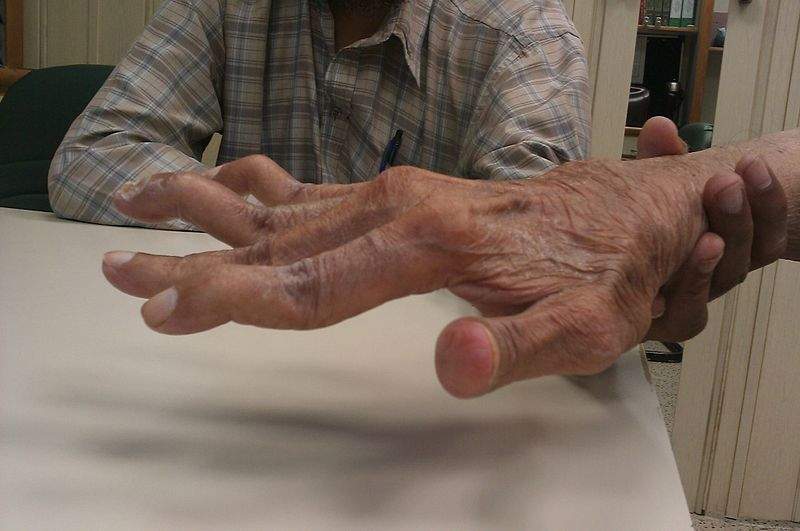
On October 23rd at the 2018 ACR/ARHP Annual Meeting, Gilead/Galapagos presented data in the late-breaking abstract poster session detailing the outcome of FINCH 2, their Phase III trial of filgotinib (FIL) in patients with rheumatoid arthritis (RA) who were refractory to biological disease–modifying anti-rheumatic drugs (bDMARDs). The trial successfully met its primary endpoint of ACR20 response at Week 12 and demonstrated that FIL had a satisfactory safety profile.
Compared to data from Abbvie’s SELECT-BEYOND trial of upadacitinib, which analyses a similar population of bDMARD refractory patients on concomitant conventional synthetic DMARDs (csDMARDs), FIL appears to be equally efficacious, but may have had a slightly better safety profile. Although it remains to be seen whether this safety trend will extend into Gilead/Galapagos’ two remaining Phase III trials, the possibility of a JAK inhibitor with an improved safety profile is an exciting prospect.
Patients enrolled in the FINCH 2 trial had high disease activity, were receiving ongoing treatment with one or two csDMARDs, and had failed one or more bDMARDs. A total of 448 patients were randomised to treatment with placebo plus csDMARDs, FIL 100mg plus csDMARDs, or FIL 200mg plus csDMARDs. Across the board, FIL treatment significantly improved disease activity outcomes in patients failing to achieve a low disease activity despite prior use of bDMARDs.
The primary efficacy endpoint of ACR20 at Week 12 was achieved in 66%, 58%, and 31% of patients in the FIL 200mg, FIL 100mg, and placebo groups, respectively. Of particular interest was that subgroup analysis of patients based on the number of prior bDMARDs failed, highlighted that FIL was especially effective compared to placebo in the 23% of patients who had failed at least three bDMARDs.
While the percent differences between FIL treatment arms and placebo averaged about 25% in patients failing less than three bDMARDs, the difference nearly doubled in patients failing three or more bDMARDs. This suggests that FIL might be a particularly effective option in patients with highly recalcitrant disease. While both FIL doses resulted in significantly greater percentages of patients achieving low disease activity by DAS28-CRP, CDAI, and SDAI scores compared to placebo, only patients prescribed the 200mg dose were able to achieve remission based on these scores.
Safety data for filgotinib in the FINCH 2 trial were also quite promising. Filgotinib treatment was not associated with an increased risk of adverse events (AEs), serious AEs, or AEs leading to premature study discontinuation. In the first 12 weeks of the study, infection rates were highest in the FIL 200mg group (23%), while the FIL 100mg and placebo groups had infection rates of between 18% and 19%.
How well do you really know your competitors?
Access the most comprehensive Company Profiles on the market, powered by GlobalData. Save hours of research. Gain competitive edge.

Thank you!
Your download email will arrive shortly
Not ready to buy yet? Download a free sample
We are confident about the unique quality of our Company Profiles. However, we want you to make the most beneficial decision for your business, so we offer a free sample that you can download by submitting the below form
By GlobalDataThroughout the full 24 week study, infection rates increased to 36%, 34%, and 26% for the FIL 200mg, FIL 100mg and placebo groups, respectively. The incidence of herpes zoster-related disease was clearly related to FIL treatment, with 1.4 % of FIL-treated patients having an infection over the course of the study, compared to 0% in the placebo group. A finding that was quite unique among clinical trials of JAK inhibitors was that FIL treatment in the FINCH 2 study was not associated with an increased risk of opportunistic infections, serious infections, or malignancies. The safety profile of FIL was also unique in that treatment did not result in the typical decrease in platelets and haemoglobin over time as is commonly seen with other JAK inhibitors. This is likely driven by the JAK1 specific nature of FIL.
When compared with Abbvie’s pipeline selective JAK1 inhibitor, upadacitinib (UPA), in its performance in the SELECT-BEYOND trial, a study that assessed similar endpoints and possessed a similar trial design up until Week 12, the two drugs showed comparable efficacy across all endpoints assessed. However, based on the data available, FIL treatment may be associated with a slightly lower risk of infections than UPA, particularly serious and opportunistic infections, although the rate of herpes zoster-related disease was similar in both drugs.
In FINCH 2, FIL demonstrated an excellent efficacy and safety in some of the most difficult-to-treat RA patients. FIL’s promising safety profile in particular, if replicated in the FINCH 1 and FINCH 3 trials, could help differentiate FIL in an increasingly competitive JAK inhibitor space.




Related Company Profiles
FIL Limited